EMV Compliance and Payments Explained
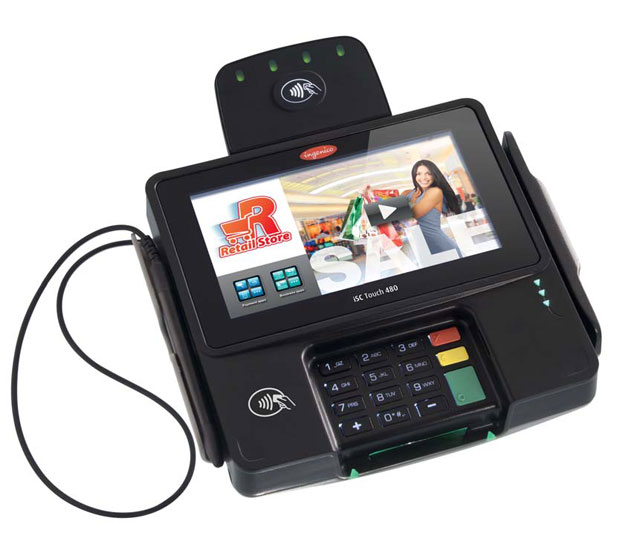 If your business takes any kind of card payments then you probably have been coming across the term “EMV” quite a bit recently. If you haven’t, then it’s a good time to get educated given EMV will be changing the way payments are made and who will be held accountable for fraud in the US.
If your business takes any kind of card payments then you probably have been coming across the term “EMV” quite a bit recently. If you haven’t, then it’s a good time to get educated given EMV will be changing the way payments are made and who will be held accountable for fraud in the US.
EMV enabled cards are the type that have the small smart chip on them as well as the traditional magnetic stripe. Compared to  magnetic stripes, EMV cards are much more secure against fraudulent usage and copied cards.
With the October 1, 2015 EMV compliance deadline coming up, getting up to speed on how you can ensure your business isn’t going to be held accountable for fraudulent usage is a must. Barcodes, Inc has you covered with our new EMV Learning Page and the expertise to provide you will payments solutions for any budget.
SATO’s CLNX Series: Industrial Printing Made Simple
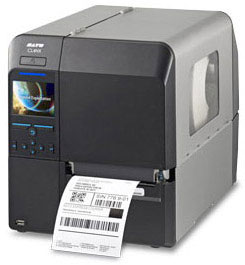 SATO has designed a true plug and play printer with their new CLNX series. The CLNX series has been engineered to be simple to use and easy to assimilate with existing systems. The CLNX also is offered in two different size options, a 4 inch (CL4NX) and a 6 inch (CL6NX).  With its multiple sizes, energy efficiency and coreless ribbon, the CLNX series may be the perfect label printer to easily plug into many different printer applications.
SATO has designed a true plug and play printer with their new CLNX series. The CLNX series has been engineered to be simple to use and easy to assimilate with existing systems. The CLNX also is offered in two different size options, a 4 inch (CL4NX) and a 6 inch (CL6NX).  With its multiple sizes, energy efficiency and coreless ribbon, the CLNX series may be the perfect label printer to easily plug into many different printer applications.
Key features of the new CLNX include:
- Accessible operations from its 3.5-inch color display and onboard video tutorials
- Unparalleled communication and emulation capabilities
- Simple maintenance with its tool free printhead and platens replacement
- Outstanding print quality consistent across a wide range and size of labels
- Superior rugged aluminum die-cast construction
- Equipped for global distribution with 30+ display languages and 40+ print character sets
Asset vs Inventory Tracking Explained
When explaining data tracking, the first question our customers ask is “Aren’t asset tracking and inventory tracking the same thing?†The short answer is no.
Assets are “permanent†objects that belong to a company. They are items a business uses internally, such as computers, tools or educational material. An asset is always tracked as a unique item. For example, even though you may give 10 of the exact same PC, you are managing each PC as an individual item with its own unique barcode label. You want to ensure that you have accurate information on each specific asset’s location, condition, purchase date, value, custodian and most recent maintenance.
Inventory tracking refers to objects that are sold, distributed or otherwise consumed by a company. These “temporary†objects include retail items and office supplies. For example, you may have 100 boxes of staples in inventory and when you use one box the tracked quantity decreases by one. You are not concerned with what specific box was used, but rather that 1 of 100 was removed. Ultimately, you want to know how many you have in stock and when to order more.
To begin, compare your objects with the chart below to determine if you need inventory or asset tracking:
| Description | Asset | Inventory |
|---|---|---|
| Objects used internally, such as computers, tools, and educational materials | • | |
| Track depreciation of company property | • | |
| Track maintenance on company equipment | • | |
| Objects are for sale or resale | • | |
| Ability to track/monitor reorder levels | • | |
| Objects are “temporary” and/or often replace, such a paper, pens and other consumables | • | |
| Employees may check objects in and out | • | • |
For more assistance finding the right data collection solution for your needs, contact us at Barcodes, Inc.
Mobile Label Printing for Shipment Processing
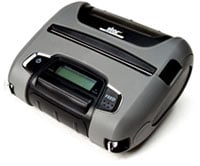 The transition to a mobile experience in retail and consumer-focused applications has ushered in a range of new hardware to support these new demands. Even though the focus has been towards retail environments, manufacturing and warehouse facilities have been finding ways to improve efficiency with these new mobile technologies.
The transition to a mobile experience in retail and consumer-focused applications has ushered in a range of new hardware to support these new demands. Even though the focus has been towards retail environments, manufacturing and warehouse facilities have been finding ways to improve efficiency with these new mobile technologies.
Shipping/receiving and inventory are two applications that have taken advantage of the wide range of mobile printers currently available to improve performance and accuracy. In a warehouse environment, employees are constantly on-the-go and being able to print labels when an order is picked or stock is put away saves time from being tied to a fixed print station. With on-demand label printing, employees will have an increase in efficiency and better control of production.
Zebra Labels for Indirect Food Contact FDA 175.105
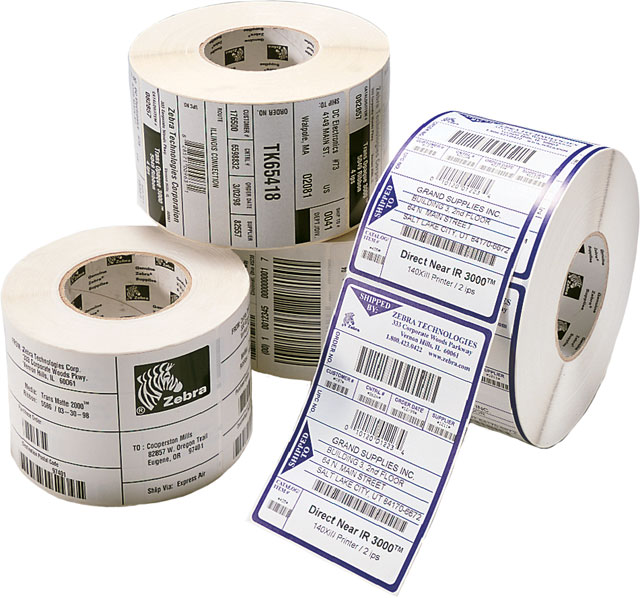 Many food packaging and repackaging businesses have a need to find a packaging label that has an adhesive suitable for indirect food contact. Most importantly these business need a labeling solution that meets Food and Drug Administration (FDA) guidelines for indirect food contact.  Indirect food contact is defined as a substance that may come into interaction with food as part of packaging or processing equipment, but are not intentionally added directly to the food. Using a label that doesn’t meet food contact requirements can potentially lead to contaminated food, product returns and fines for having unapproved adhesives used in a food application.
Many food packaging and repackaging businesses have a need to find a packaging label that has an adhesive suitable for indirect food contact. Most importantly these business need a labeling solution that meets Food and Drug Administration (FDA) guidelines for indirect food contact.  Indirect food contact is defined as a substance that may come into interaction with food as part of packaging or processing equipment, but are not intentionally added directly to the food. Using a label that doesn’t meet food contact requirements can potentially lead to contaminated food, product returns and fines for having unapproved adhesives used in a food application.
Zebra manufactures several sizes and types of labels that have an adhesive formulation developed to meet FDA regulation 175.105, indirect food contact (see this list for FDA approved labels). Â These labels are approved to be used for indirect contact food applications such as, label food in a retail location to large scale packaging of food from a manufacturing facility.
Avoid the hassle and expense of using non-food approved labels by introducing Zebra labels, which meet FDA regulation 175.105 for indirect food contact, into your food application today.
Contact your dedicated BarcodesInc representative today, for more information.
How Do I Know What Barcode Label I Have?
Barcode labels come in a variety of types and materials to meet the needs of a range of applications. From a temporary shipping label to a rugged asset tag that needs to endure the challenges of outdoor use, there are labels that can meet these needs.
come in a variety of types and materials to meet the needs of a range of applications. From a temporary shipping label to a rugged asset tag that needs to endure the challenges of outdoor use, there are labels that can meet these needs.
Knowing what type of label you are using is almost impossible to tell from just looking at it but there are a few key tests you can conduct to figure out what type and material your label is. Following these steps you can be assured you order the same label your application needs.
1. Try to tear the label in half
If you can tear the label in half we know right away that it’s a paper stock as opposed to a synthetic material like polypropylene or polyester.  Synthetic materials may stretch and deform a bit but will not be tear-able by hand.
Continue reading »
Zebra’s Customer Self-Service Solutions
For today’s highly connected retail shopper, having access to the same range of information they experience online is more and more expected even during the brick and mortar shopping experience. Smartphones may provide simple product lookups and pricing but more store functions can be easily expanded on with the right in-store technology. Just as they find in an online experience, being able to search product data and previous purchase history is another way to further empower customer satisfaction.
Whether it’s pulling up more detailed product information, stock levels and locations, or being able to access a gift registry and coupons/promotional items, customers desire to have access to your retail store both physically and electronically.
Expanding the customer experience really comes down to providing the right tools to your customers. Zebra’s line of Interactive Kiosks and robust Wireless LAN are the perfect additions  to any retail environment to provide customers the ability get product information or find an associate at the exact moment they want one.
Continue reading »
When Time is Money – It Adds Up
 When choosing a mobile computer or barcode scanner, one of the last things on anybody’s mind is what kind of battery I should buy with my device. Even worse, sellers fail to explain how the battery alone can save a company on time, money and productivity.
When choosing a mobile computer or barcode scanner, one of the last things on anybody’s mind is what kind of battery I should buy with my device. Even worse, sellers fail to explain how the battery alone can save a company on time, money and productivity.
Research shows that companies lose at least 20 minutes of productivity every time a battery is changed mid-shift. Here’s an example of what device downtime can cost:
- 500 devices in operation
- 500 devices x 1 battery failure each = 500 mid-shift failures per day
- 500 mid-shift failures x 20 minutes each = 167 hours lost each day
- 167 hours/day x $9.00/hour = $1,503.00 per day
- $1,503.00 x 360 days = $541,080 PER YEAR in lost productivity
Don’t take chances with your batteries – IPT Productivity+ Series batteries run 15% – 20% longer and guarantee 100% compatibility with OEM devices including Symbol, Zebra, Motorola, Honeywell, Intermec, LXE, Datamax-O’Neil and Vocollect.
Printronix PrintNet Enterprise Solution
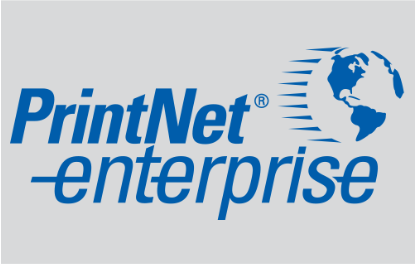 The ability to remotely manage a fleet of printers and their operations is a must have for many businesses. Printronix offers the PrintNet Enterprise solution to its customers free of charge with the purchase of a Printronix thermal printer.
The ability to remotely manage a fleet of printers and their operations is a must have for many businesses. Printronix offers the PrintNet Enterprise solution to its customers free of charge with the purchase of a Printronix thermal printer.
PrintNet allows an entire fleet of printers to be configured to the exact specification for the most effective and efficient printing in the following ways:
- Organize, regulate and manage Printronix printers from a central location via LAN/WAN connectivity
- React to printer issues quickly with alerts sent to a specified email address or mobile device
- Apply remote front-panel lockout to specified printers which will eliminate unapproved users from making changes to the printers configuration
- Remotely set printer configurations, install firmware updates, and resource files to multiple printers all at one time
The capability to access any single printer or multiple printers remotely is a value added feature provided free of charge with Printronix thermal printers. Contact your knowledgeable Barcodes, Inc. sales representative for more information on how PrintNet can help manage your network of Printronix Printers.
Is ID Card Software Specific to a Printer?
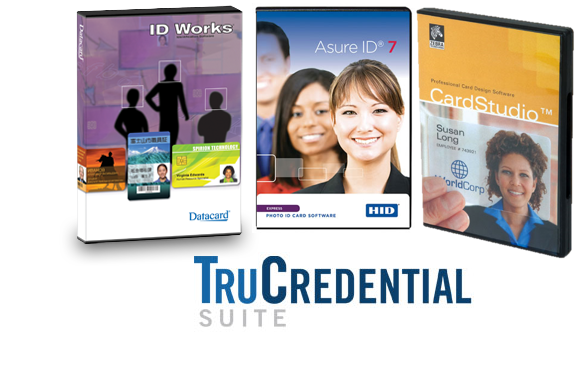 Most ID card printer manufacturers have their own software. Datacard’s TruCredential, Zebra’s ZMotif CardStudio, and Fargo’s Asure ID have various versions and levels of sophistication. All have general design capabilities, and then advance to allow for additional benefits including but not limited to centralized databases, visitor management, and network capabilities. But are the various software choices only compatible with the same brand of printers? The answer is no. The software mentioned above are compatible across brands. Your choice should depend on ease of use and features set. Datacard’s new TruCredential has an extremely easy user-interface and allows you to design process flows for your typical ID needs. The software, recently released, offers the best of multiple Datacard software (ID Works and TruPhoto).
Most ID card printer manufacturers have their own software. Datacard’s TruCredential, Zebra’s ZMotif CardStudio, and Fargo’s Asure ID have various versions and levels of sophistication. All have general design capabilities, and then advance to allow for additional benefits including but not limited to centralized databases, visitor management, and network capabilities. But are the various software choices only compatible with the same brand of printers? The answer is no. The software mentioned above are compatible across brands. Your choice should depend on ease of use and features set. Datacard’s new TruCredential has an extremely easy user-interface and allows you to design process flows for your typical ID needs. The software, recently released, offers the best of multiple Datacard software (ID Works and TruPhoto).
Always feel free to consult an ID professional with any questions on what is the best software for you.




